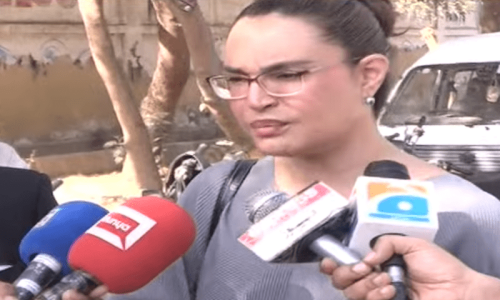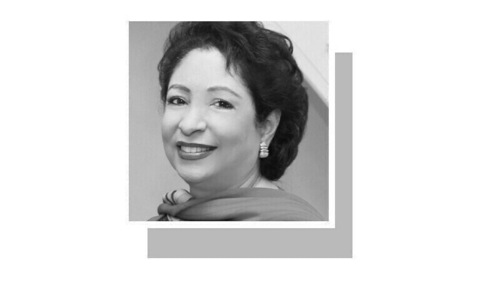Covid-19 has wreaked havoc on the lives and livelihood of people at a proportion never experienced before and continues to rage across the globe. Notably, it has exposed critical cracks at all levels of economic, social, and human systems, which systematically perpetuated inequalities and provided fertile soil for those inequalities to flourish, resulting in the development of a class of citizens having fragile social cohesion and strikingly diminished resilience to external shocks.
Though Covid-19 spread indiscriminately, its impact is largely disproportionate across a myriad of economic and demographic lines, leading to a further deterioration in existing disparities which are far more widespread and systematic in nature than previously thought. This is how Covid is unequally affecting the people on employment, education, health, and social welfare.
Micro and small businesses account for the majority of employment in Pakistan. The strict lockdowns and other containment measures have hit the small industry hardest, leaving millions jobless. The lower- and middle-income working-class never saw it coming and have been floundering in the wake of a sharp contraction in the social and economic mobility caused by the pandemic.
According to the Pakistan Labor Force Survey (2018), 27m people work in the non-agri informal sector, which constitutes 72 per cent of the total workforce engaged. The informal sector majorly includes construction, transport, hotels & restaurants, personal services, wholesale, and retail businesses which have been severely crippled due to the crisis.
The mortality rate from the pandemic for Pakistanis living in the UK is 2.39 times higher than for white people, with a heightened risk of infection and death among low-skilled working males in urban settings
Pakistan Household Integrated Economic Survey (2016) reported that per house, averaging 6.7 individuals, has a mean of 1.93 income-earners. Based on these pieces of information, it is estimated that 85 million people — mainly workers from the lower-income stratum — have been out of work only in the informal sector during the lockdown periods, suggesting that less-educated and low-skilled works are more likely to have lost jobs than advanced-educated and high-skilled employees, laying bare the lopsided impact of Covid on the vulnerable, marginalised, and poor households in Pakistan.
These estimations are consistent with the International Monetary Fund projections that due to the pandemic, the world would witness the first steep rise in global poverty since the 1997-98 Asian financial crisis, and millions of Pakistani people are forecast to be pushed into extreme poverty due to loss of jobs. The coping strategies — such as the sale of livestock, and agri products — adopted by the poor during the crisis are likely to depress their future income flows, leading to a further rise in income inequalities over the medium term.
Covid has massively jeopardised the education system, causing the growth in human capital to decline in years to come. The learning lost due to closure of schools have a deep and lasting impact on students, particularly from socio-economically deprived backgrounds, and need to be addressed by developing catch-up interventions such as extending learning days and class hours, free tutoring & repeat courses, shortening vacations, and teacher training, among others.
The process of learning is cumulative in nature and if left unaddressed, learning losses could exacerbate over time and prevent students from developing the skills critical for participating and thriving in connected societies and economies. The current public spending in Pakistan on education and health sectors as a percentage of GDP is 2.3pc and 1.1pc respectively, which is abysmally low among middle-income nations.
The Pakistan National Nutrition Survey (2018) reported that 38m people are undernourished and suffering from severe food insecurity, costing a staggering 3pc of GDP annually in lost productivity. The state of nutrition among vulnerable families is likely to worsen during the crisis. The statistics on Covid fatalities show a highly uneven pattern along the lines of age, gender, occupation, housing location & condition, deprivation, underlying comorbidity, and an individual’s subtle genetic makeup.
According to the Office for National Statistics, University of Oxford, the mortality rate from Covid-19 for Pakistanis living in the UK is 2.39 times higher than for white people, with a heightened risk of infection and death among low-skilled working males in the urban settings. Though data is scant in Pakistan, understanding the drivers of these health disparities can help prioritise vaccine distribution, formulate effective future health responses, and achieve health equity among vulnerable groups.
Domestic violence — both physical and psychological — in Pakistan is pervasive in almost all segments of society, but the majority of cases are not officially reported by the victims because of shame or fear of further assault. The lockdowns forced people to stay home, causing a surge in cases of domestic abuse. According to Sustainable Social Development Organization (SSDO), a non-governmental organisation in Pakistan, the incidents of violence against children and women have almost doubled during 2020, revealing the Covid-induced inequalities that leave children and women vulnerable in times of crisis.
Furthermore, the socio-economic outlook across the globe in 2021 and beyond is highly uncertain as the emergence of a new variant of Covid-19 in India is threatening to disrupt and undo the progress so far made to bring an end to the pandemic. The return to normalcy of socio-economic activities to the pre-pandemic level is possible by the end of 2021 at only the upper bound of the forecast.
The experience from 21st century infectious viral disasters — such as SARS, H1N1 Influenza, MERS-CoV, Ebola, and Zika — suggests that not only welfare effects on the poor and vulnerable are far larger, the recovery could also remain painfully slow. In this light, as an immediate policy response, the Government of Pakistan should expand the coverage and outreach of the Benazir Income Support Programme, Ehsaas, and Prime Minister’s relief fund to help the households most in need stave off hunger, education, and health emergencies.
As a long-term measure, public-private arrangements should be mobilised to strengthen education & health care systems, social safety nets and build a post-covid resilient society to reduce socio-economic disparities triggered by this pandemic and to promote the equality of opportunity between wealthy and disadvantaged populations in the face of similar future crises.
The writer is a professor at the Institute of Business Administration, University of Sindh
Published in Dawn, The Business and Finance Weekly, June 7th, 2021













































